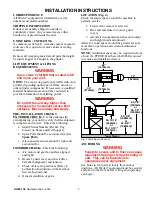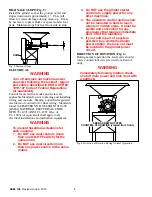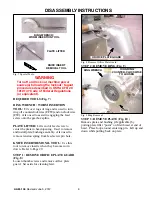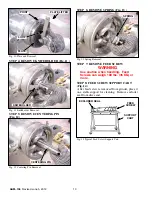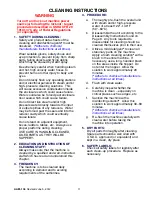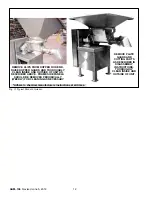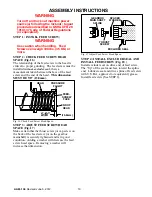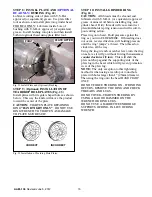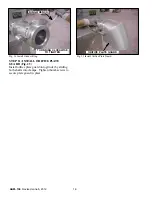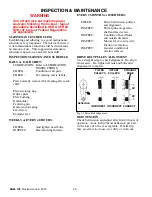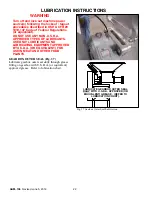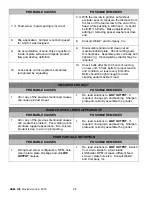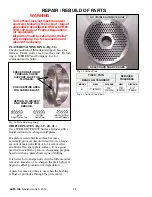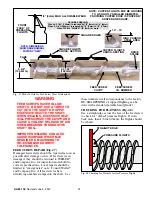
AAM
−
136
Revised June 5, 2012
20
INSPECTION & MAINTENANCE
WARNING
Turn off and lock out machine power
source(s) following the lockout / tagout
procedures described in OSHA CFR 29
1910.147 Code of Federal Regulations
(or equivalent).
MAINTENANCE SCHEDULING
Establishing and adhering to a good maintenance
schedule is very important. The interval between
certain maintenance functions will be determined
by amount of use. This suggested maintenance
schedule is based on a normal 8 hour shift.
INSPECTION/MAINTENANCE SCHEDULE
DAILY or EACH SHIFT:
LUBRICATION: Refer to LUBRICATION
INSTRUCTIONS.
CHECK:
Condition of all parts.
CHECK:
For missing safety labels.
Parts normally removed for cleaning after each
shift:
Plate retaining ring
Orifice plate
Plate bushing
Knifeholder
Centering pin
Knife tension spring
Feed screw
Excluder seal
WEEKLY or EVERY 40 HOURS:
CHECK:
And tighten head bolts.
INSPECT:
Head and ring threads.
EVERY 3 MONTHS or 1000 HOURS:
CHECK:
Drive belt tension, pulleys
and alignment.
INSPECT:
Drive spline on gearbox
shaft and feed screw.
INSPECT:
Condition of head flutes
and outside diameter.
INSPECT:
Motors for excessive dirt,
friction or vibration.
INSPECT:
General condition of
exterior surfaces.
DRIVE BELT PULLEY ALIGNMENT
Use a straight edge to check alignment. Re
−
align
if necessary. Re
−
tighten all nuts and bolts after
alignment is complete.
TILTED
PULLEYS
CORRECT
Deflection
STRAIGHT
EDGE
OFFSET
PULLEYS
INCORRECT
90
5
90
5
INCORRECT
Fig. 33 Drive Belt Alignment.
BELT TENSION
Check belt tension and adjust after first 40 hours of
operation. A one inch (25mm) deflection per belt
with a force of 6 lbs. is acceptable. If belts slip,
they are either too loose, wet, dirty or worn out.


